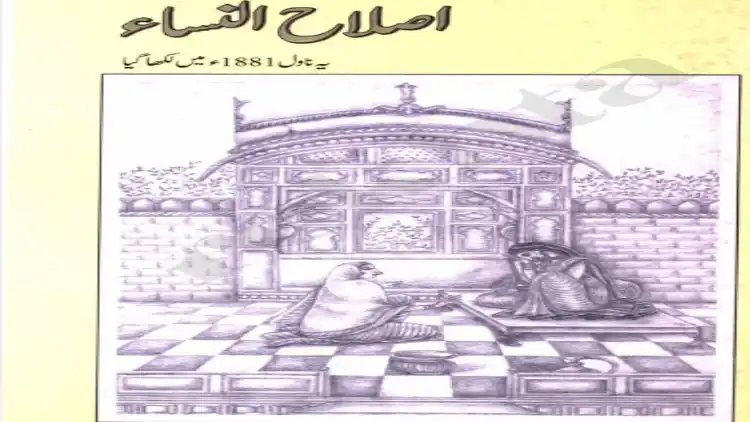
 Saquib Salim
Saquib Salim
“For a woman to write and then to get it published was a revolutionary step in itself.”
-Kishwar Naheed
From the beginning the history of Urdu Novel writing was pegged around women and their issues. The first one - Maulvi Nazeer Ahmad’s Mirat-ul-Uroos, - published in 1869, and its sequel Binat-un-Nash included, most early novels/stories were about the women, their education and social status.
The credit of the awakening among the Muslim writers to campaign for the women’s right goes to Sir William Muir. Muir in his address to the annual session of Madarsatul-Uloom, Aligarh in 1857 urged the Indian Muslims to follow their Egyptian counterparts in opening the avenues of modern education to the Muslim women. If this Urdu speech couldn’t persuade the Indian Muslims, cash rewards certainly did.
Following his suggestion, the British government announced an annual monetary reward for the Urdu books that promoted the idea of education among Muslim women. Apart from the novels by Nazir Ahmad Maulvi Karim-Uddin’s Tazkirah-un-Nisah, Muhammad Hussain Khan’s Tehzeeb-e-Niswan, and Muhammad Zaheer-Uddin Khan’s Ta’alim-i-Niswan some other novels were also awarded.
In 1869, when Mirat-ul-Uroos was published Rashid-un-Nisa was 16 years old. She belonged to an educated elite family of Azimabad (now, Patna). This novel was an eye-opener to her. It made her ponder upon her own, and other women’s social status. Her brother, Imdad Imam Asar, was one of the tallest literary figures in Urdu literature. Rashid was aunt to Ali Imam and Hasan Imam, married to Maulvi Mohammad Yahya, a person known for his literary taste, Rashid realized that as a woman she did not have access to education, literature and knowledge.
In the 19th century and also early 20th century, women’s education was linked to their access to education. Rashid-un-Nisa was no exception. In her opinion, both the Hindu and Muslim women should have access to modern education.
It was Mirat-ul-Uroos that coaxed Rashid-un-Nisa into writing a novel. She started writing it somewhere in 1880 and completed it within six months. Though the novel was written in 1881 she could not get it published until 1894.
To make readers aware of the taboo associated with a woman writing, I would like to mention an anecdote from Rashid-un-Nisa’s life. Nisar Kubra, one of the earliest Urdu women poets to have her book published, was the daughter of Rashid-un-Nisa. Famous Urdu poet Shad Azimabadi applauded her poetry. Once, while she was quite young, she wrote a masnavi. Some kid from the family took her notebook and showed it to a guest. The guest was Abdul Ghafur Shahbaz, a famous Urdu critic. He appreciated the poetry of this young girl. The portion that was compared to Maulvi Mir Hasan’s poetry was:
Nazakat se saree uthaye hue
Zameen par nazar ko jhukaye hue
Ajab haal se ghar me dakhil hui
Taraf kaam ke apne maa’il hi
(Holding her saree elegantly
Looking down towards the earth
In a weird state she entered the home
Busied herself in household chores)
Even as everyone was appreciating her poetry, her brother Ghulam Maula Mauhoom was furious. He confronted Rashid-un-Nisa and told her that girls may be able to write but that did not mean that they would be allowed to become Sauda (a famous Urdu poet). He tore the notebook in to pieces. Nobody uttered a word in support of the young woman.
Imagine is such a time, a woman was writing a novel and encouraging her daughter to write poetry. Just to dream that she could write was an achievement.
Rashid-un-Nisa wrote the novel Islah-un-Nisa in 1881 but had to wait till her son Barrister Sulaiman returned from England after getting a degree in Law. In 1894, when the novel was published, it did not have author’s name. Rather, - seems shocking and funny today - author was mentioned as Mother of Barrister Sulaiman, Daughter of Syed Wahiduddin Khan Bahadur and sister of Imdad Imam. Imagine, the first woman to get published in Urdu was not even allowed to mention her name on the book.
Rashid-un-Nisa did not forget to thank her son in the introduction of the novel. She writes, “One advantage of Mohammad Sulaiman getting higher foreign education is that the book which was lying among waste papers for 13 years will now be published. May Allah grant him success in his life.”
Rashid-un-Nisa was impressed by the writings of Maulvi Nazir Ahmad. In Islah-un-Nisa she brings out a relevant apprehension expressed by many that writing about education wouldn’t help anyone.
In the novel a woman Ladli asks another Ashraf-un-Nisa, “Yes, I know Maulvi Nazir Ahmad has also written such books. In Mirat-ul-Uroos he has written about Akbari and Asghari. So what? Have all the women become Asghari? Is there no Akbari Left?” (Asghari a character in the novel is educated while Akbari is not). To this, Ashraf-un-Nisa replies, “If not all have become Asghari at least 75 out of 100 have. Now only 25 Akbaris are left. Won’t we term it a success?”
On the one hand she was thankful to Nazir Ahmad for creating an awakening among women and on the other she placed her writing on a higher pedestal. She argued that the writings of Nazir Ahmad had encouraged her but her own novel would inspire more women, since hers was a woman’s voice. She was writing from her own experience and women would relate to her readily. Though she never underplayed the role of men writing about women, she was conscious that women need to have their own voice.
In order to compare Rashid-un-Nisa’s work with her contemporaries, we also need to keep in mind that she never attended a school. She was taught at home and read the books of other male members of the family out of interest.
Rashid-un-Nisa not being an armchair intellectual makes her stand apart from others. Besides writing, she was also an educationist. In 1906 she established a girls’ school, Madarsa Islamia (now known as Betia House). This school was one of the finest of the region where Muslims were taught Urdu and Hindus were taught in Hindi.
While we move forward in time, the struggle of Rashid-un-Nisa is inspiring and worth reading.
(The author is a historian and a writer)
